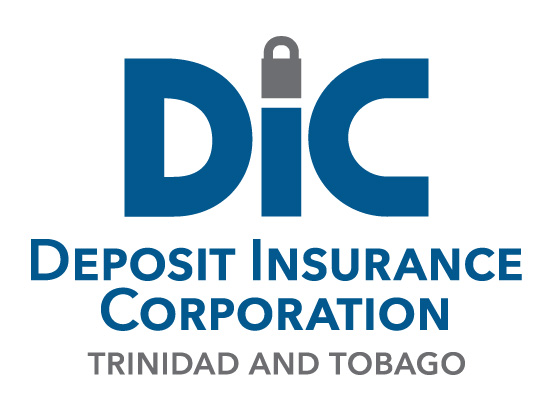Definition of a Trust Account
A Trust Account is an account in respect of which a beneficiary has an interest under an irrevocable express trust created by a written law or by a trust instrument, but does not include any interest retained by the holder.
Funds deposited in an account by a trustee under an irrevocable express trust are insured on the basis of the beneficial interests under such trust.
The interest of each beneficiary established under such a trust is insured up to $200,000, separately from other accounts held by the trustee, the settlor (grantor) or the beneficiary in his individual capacity.
Trust Relationships
Settlor: Person whose property was used to establish the trust.
Trustee: Administrator of the trust, may be a person or an Institution
Beneficiary: Person ultimately entitled to the trust property.
Scenario:
Multiple Beneficiaries of an Irrevocable Express Trust Account
T is a trustee of an irrevocable trust created by S (the Settlor), for the benefit of A and B in equal shares.
T holds an account containing TT$400,000 in trust funds.
A and B, as well as T and S, each maintain individual accounts in the amount of TT$200,000 each.
Insurance coverage:
Individual Accounts:
|
Account Holder |
Insurance Coverage |
|
S (Settlor) |
$200,000 |
|
T (Trustee) |
$200,000 |
|
A (Beneficiary) |
$200,000 |
|
B (Beneficiary) |
$200,000 |
The individual accounts of A, B, T and S are each separately insured up to $200,000.
Trust Account:
The Trust Account of TT$400,000 is fully insured, since each of the deemed interest of the beneficiaries is insured up to TT$200,000.
Scenario:
Multiple Irrevocable Express Trust Accounts with the same Beneficiary
First Trust Account
S is the Settlor of an Irrevocable Express Trust Account for the sole benefit of his son, B, which T (the Trustee) maintains in an account in Y institution containing TT$200,000.
Second Trust Account
S subsequently creates a separate Irrevocable Express Trust Account, also for B’s sole benefit, with X institution as Trustee.
X Institution deposits $5,000 of the trust funds in another account in Y Institution.
Insurance Coverage:
|
B’s Interest (First Trust Account) |
$200,000 |
|
B’s Interest (Second Trust Account) |
$5,000 |
|
Total Deposits held in Trust for B |
$205,000 |
|
B’s Deposit Insurance Coverage |
$200,000 |
Scenario:
Irrevocable Express Trust Accounts – and– Revocable Trust Accounts
S is the Settlor of an Irrevocable Express Trust Account for the sole benefit of his son B.
-T (the Trustee), deposits $200,000 of the trust funds in a trust account.
-S establishes a Revocable Trust Account in the amount of TT$200,000 for the sole benefit of B.
-S also has an Individual Account of TT$200,000.
Insurance Coverage:
B’s interest in the Irrevocable Express Trust Account containing $200,000 is fully insured.
|
B’s interest in the Revocable Trust containing $200,000 is not insured. This amount will be added to S’s deposit |
$200,000 |
|
S’s Individual Account (this is insured up to $200,000) |
$200,000 |
|
S’s Total Interest |
$400,000 |
|
S’s Deposit Insurance Coverage |
$200,000 |
Impact of Delinquent or Past Due Loans on deposit insurance coverage
If a loan (demand) and a deposit are held in the name of the same person or organization, the Deposit Insurance Corporation (DIC) will offset the balance on the deposit account against the balance due on the loan up to the maximum reimbursable Deposit Insurance Limit of TT$200,000.provided that the loan is non-performing.
Scenario:
Loans & Deposit Accounts where the Deposit is Greater
A has a deposit account for TT$190,000 and a non-performing loan account (demand) with a balance of TT$180,000.
Insurance Coverage:
|
Balance due on Deposit |
$190,000 |
|
Outstanding Loan |
$180,000 |
|
Insured Deposit Balance |
$10,000 |
The balance due on the deposit is able to fully offset the outstanding loan leaving an insured deposit balance of $10,000 which will be reimbursed to A
Scenario:
Loans & Deposit Accounts where the Loan is Greater
A has a deposit account for TT$160,000 and a non-performing loan balance of TT$170,000.
Insurance Coverage
|
Balance due on Deposit |
$160,000 |
|
Outstanding Loan |
$170,000 |
|
Outstanding loan balance |
$10,000 |
The balance due on the deposit is only able to partially offset the outstanding loan, A will not receive any deposit insurance reimbursement and he must settle the outstanding loan balance of $10,000.
Scenario
Loans Exceeding the Maximum Reimbursable Deposit Insurance Limit
J has a deposit balance of $240,000 and an outstanding loan of $230,000
Insurance Coverage :
|
Balance due on Deposit |
$240,000 |
|
Outstanding Loan |
$230,000 |
|
Deduct the Maximum Reimbursable Amount (this is restricted to the Deposit Insurance Coverage Limit of $200,000) |
($200,000) |
|
Net Position (Outstanding Loan Balance) |
($30,000) |
|
Net Amount Due to Depositor |
$0 |
Note:
(i) The DIC will apply the limit rule:- The maximum reimbursable deposit insurance limit of $200,000 will be set off against the loan balance of $230,000 resulting in a nil balance due to the depositor. In simple terms, no payment would be made to the depositor.
(ii) The depositor will be issued a Liquidator’s Certificate for the balance on the deposit in excess of the TT$200,000 Deposit Insurance coverage limit, which could not be applied to the outstanding loan.
(iii) The outstanding loan balance of TT$30,000 must be settled by the depositor/loan customer.




